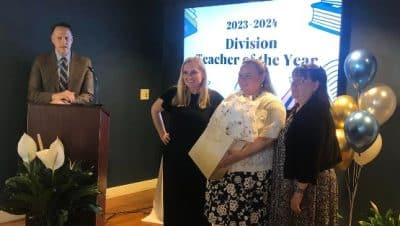
The enzyme, called sphingosine kinase, is required to sustain life and regulates the blood and tissue levels of the lipid mediator, sphingosine 1-phosphate (S1P).
“This enzyme is key to many biological processes — from immune response to maintaining the integrity of blood vessels. Inhibiting it may be a useful strategy against various diseases,” said Webster Santos, an associate professor of chemistry in the College of Science and a member of the Virginia Tech Center for Drug Discovery.
Incorrect levels of S1P can be troubling for cells and tissues. Levels that are too high signal for cell growth and are associated with certain cancers, such as breast, ovary, lung, and brain. Further, there is mounting evidence that S1P increases in red blood cells in response to high altitudes, where it helps to deliver oxygen to tissues.
However, this response might make the sickling of red blood cells worse in sickle cell disease patients. Conversely, S1P levels that are too low are associated with a poorer prognosis in patients with sepsis, a life-threatening response to infection.
Santos teamed up with pharmacologist Kevin Lynch at the University of Virginia to discover inhibitors of the enzyme. Their long-term collaboration has resulted in the development of the best inhibitors discovered so far. Lynch is an expert in sphingolipid chemical biology and tests the effect of the inhibitors in mice and rat models of disease.
“Web Santos’ sphingosine kinase inhibitors have been invaluable as tools to investigate S1P biology. A key discovery is that with different types of inhibitors we can either quickly decrease or increase S1P levels in the bloodstream. Our twin challenges now are to understand the molecular mechanism whereby we are able to manipulate blood S1P levels and to discover the therapeutic uses of sphingosine kinase inhibitors,” said Lynch.
With help from a recently awarded $2.1 million grant from the National Institutes of Health, the team aims to make the molecules more drug-like and investigate other ways of controlling the trafficking of S1P in the body. David Bevan, a professor of biochemistry in the College of Agriculture and Life Sciences, is handling the computational modeling of the enzyme for the project.
“We’ve already made a computer model of the enzyme. We will now dock inhibitors to see if they fit, which should accelerate our progress,” said Bevan.
The drug discovery team is hopeful that the work will eventually lead to compounds that can be taken by people.
“If we are successful, this would be a great example of an academic drug discovery program that takes a compound from bench-to-the-clinic,” Santos said.
Both Santos and Bevan are affiliated with the Fralin Life Science Institute at Virginia Tech.










